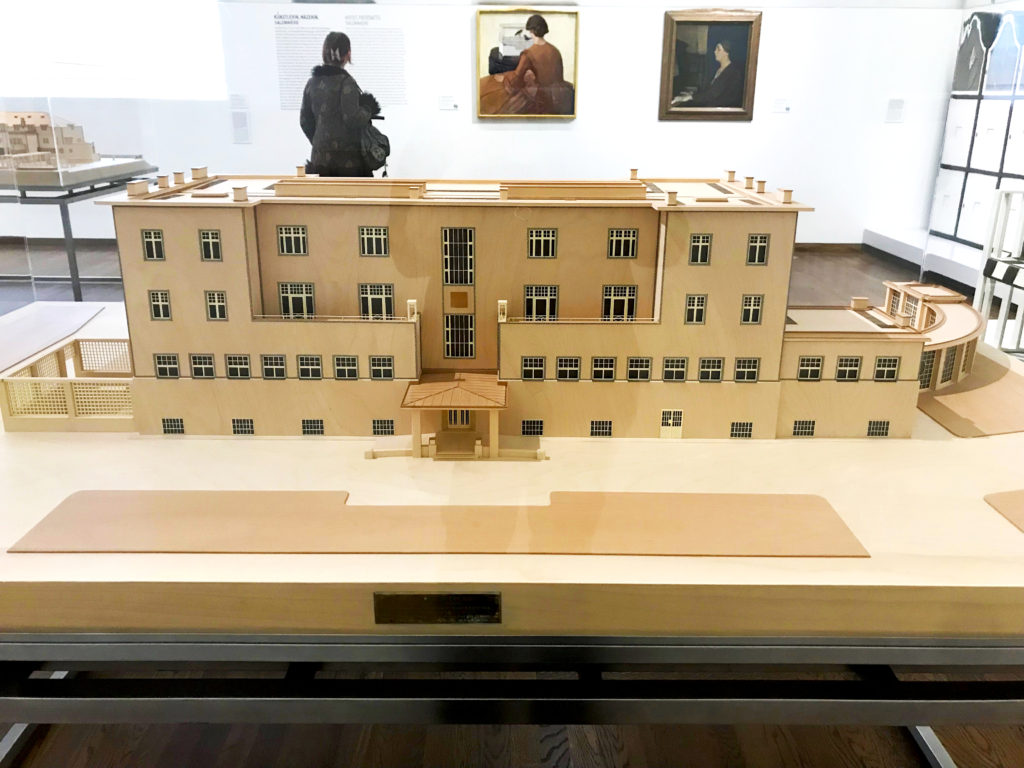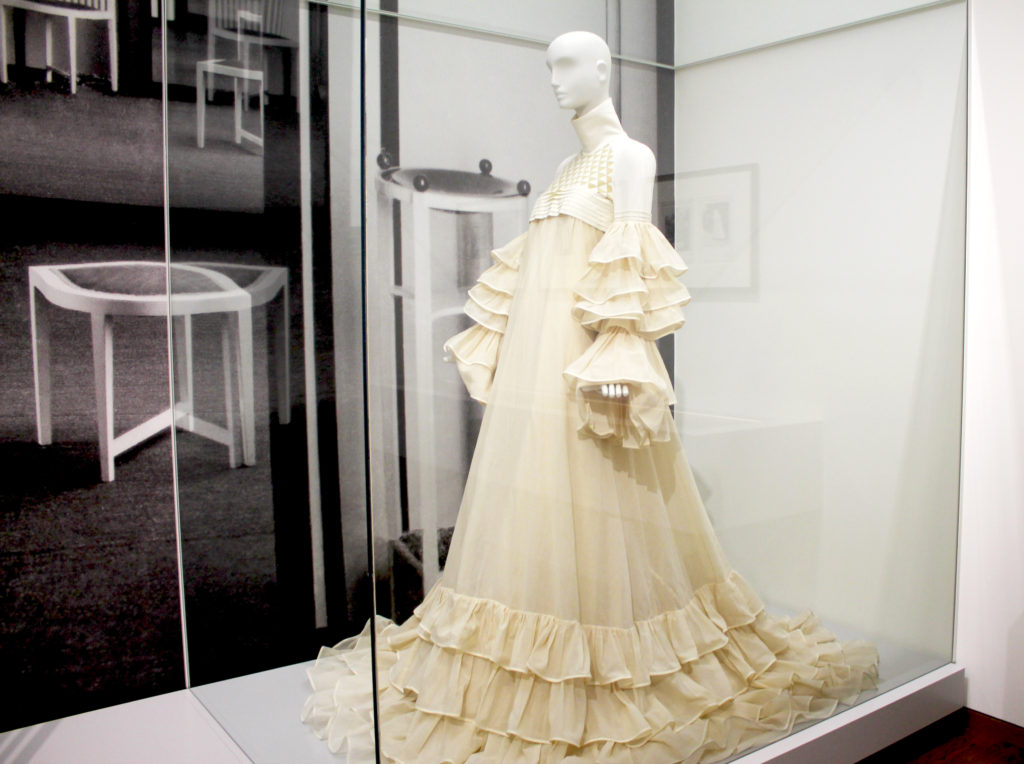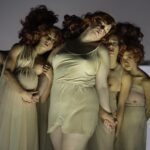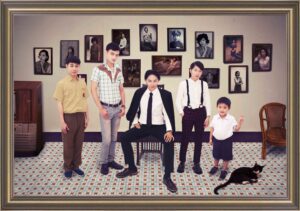
Vienna Takes Women Artists Lost For Generations Out Of The Obscurity Of History
by Heather Cassell
Anytime I stumble into a room filled with inspired women I’m delighted.
That’s just what happened on a spring day recently when I set out to explore Vienna’s Belvedere and Leopold museums. Unbeknownst to me, I was about to meet and spend the day with an incredible group of Viennese women artists and thought leaders from around the turn of the 20th century.
What a lark! As Virginia Woolf would say.
More than 50 women’s artwork, fashion, travel cases, liberation dresses, and more on display at two of Vienna’s prominent museums was stunningly delightful. The sad part is that the women’s artwork at the Lower Belvedere’s “City of Women: Female Artists in Vienna 1900 – 1938” on view until May 19, hasn’t been seen for centuries.
Over at the Leopold Museum in the MuseumsQuartier is the “Vienna 1900: Birth of Modernism” permeant exhibit. The exhibit shows more rare works from women of Vienna’s Secession Movement, what became known to the world as the Art Nouveau Movement and the source of Modernism, alongside works by Gustav Klimt, Koloman Moser, Otto Wagner, and Egon Schiele on the top three floors of the museum.
City of Women
Upon entering “City of Women,” visitors are immediately greeted by the sculpture, “Witch Doing Her Toilet on Walpurgis Night,” by Teresa Feodorowna Ries. When it was introduced to the public in 1896 it was derided for the sculpture’s provocative nature. However, the sculptress Ries gained the attention of Austro-Hungarian Emperor Franz Joseph I that lent her credence garnering her much more media attention than the headlines that attacked her.
The long conversation with the emperor and her unique sculptors also placed her in the prominent position in Klimt’s inner circle and he invited to exhibit at Secession in Vienna.
The sculpture has been damaged over the years. Her nose and left eye are bashed in. A thumb and a forearm are missing, and other gashes scar the sculpture. An image of the statue in its full state stands on the panel for people to gaze and compare. Despite the damage, she’s survived, and the impressive detail carved into the marble impressively remains demonstrating Ries’ skill.
A few feet away, another masterpiece of Ries’ sculptural work “Eve” demonstrates another example of her skill with a chisel and hammer bending the hard marble into the shapes she willed out of the unforgiving stone.


Teresa Feodorowna Ries, “Witch Doing Her Toilette on Walpurgis Night,” 1895 (Photo: Courtesy of the Belvedere)
The “Witch” enchants visitors welcoming them into the exhibit of magnificent works of Ries’ contemporaries that are truly bewitching.
The more than 60 works displayed span a variety of disciplines and genres from oils and charcoal to sculpture depicting impressionism to modernist styles. I was taken by Elza Kövesházi-Kalmár’s oil on canvas “Blooming Chestnut Trees” for its colors and details. The painting was purchased by the Modern Gallery in 1903. I was also taken aback by the joy and spirit Eugenie Breithat-Munk captured of a little girl dancing in her oil on canvas “Child Dancing” in 1905. These pieces left a mark on my memory for their celebration of life and vibrancy in their realism. I only hope more women get to experience this unique retrospective the more than 50 talented women artists’ works and get to know them.
Return To View
The works provide a broad portrait of Vienna’s return to the global art world’s vision when artists broke away from the constraints of conventional art starting in 1887 broadening its horizons. Their vision sprang from the intermingling of art, philosophy, law, medicine, nature, and technology expressed through painting and graphic art to literature and music to liberating fashion and architecture and more.
During this golden age of art, art entered the quotidian sphere breathing life into mundane daily objects beautifying them while still remaining highly functional.


The artists broke away from conventional art in their day starting around 1870 launching a period of enlightenment that spanned through world war and a collapse of an empire and a rise of a nation until Art Nouveau fell out of fashion and the women returned to obscurity 1938.
The moment’s most active period when it peaked was between 1897 and 1905.
Part of that breaking away from convention was male artists treating women as their peers. Once women proved their works were just as good or better than their male counterparts, they broke through the solid wall of patriarchy that locked them out from sharing their talents with the world.
Imagine that: Male artists, like Klimt, supported these women artists to exhibit their works alongside his contemporaries and him at exhibitions and galleries and to join the prestigious artist organizations he headed in Vienna’s Secession Movement.
Their male peers gave this group of more than 50 women access to work, network, exhibit alongside them, and sell their work and talents as commercial commodity during a period when women were locked out of the art world.
Up to that point women had to find their own way traveling long distances across Europe and paying for expensive private lessons to gain an art education. They had to develop their own networks, marketing, and careers outside of the prestigious male dominated arts schools and organizations.
Leopold
If you miss “City of Women,” you can still get to know the most prominent women artists of the era at the Leopold Museum.
Some of the most talented women of the Secession Movement is on permanently on display on three floors at the Leopold where they are presented alongside the most prominent men of the movement just as the artists would have wanted. It demonstrates the sort of feminist utopia where women artists gained equity for a brief time.
Broncia Koller-Pinell immediately demonstrated the difference between the male gaze and the female gaze in her nude portrait of a woman. The painting is clean, stripped of any distractions or décor. The colors are muted with the exception of a gold box around the woman’s head. What is unique about the painting is that her red hair is loosely pulled back in a braid similar to a highly sexualized Raphaelite painting of a woman on a couch and she’s gazing directly at the artists or the audience instead of slyly, sultry, or seductively. The woman’s figure is also imperfect. She is slightly slouched and her breasts aren’t even with one being larger than the other.


A woman reads about artist Broncia Koller-Pinell in the background of the architectural scale model of Josef Hoffmann’s Sanatorium Westend in Purkersdorf are Broncia Koller-Pinell’s works: “Young Woman Before Bird Cage: circa 1907” and “The Pianist, undated” at the “Vienna 1900: Birth of Modernism” permeant exhibit at the Leopold Museum in the MuseumsQuartier in Vienna, Austria. (Photo: Heather Cassell)
It was truly impressive to see Koller-Pinell’s works and many other people’s works that were long living in the shadows. It’s a mystery why it took so long to bring them out of storage and off of collectors’ walls to bring them into public view. Yet, it was done.
Many of the works on display at both exhibits are from private collections gathered from Austrian collectors to collections from around the world.
For more information, visit www.belvedere.at/city_of_women or www.leopoldmuseum.org.
THE GAZE:
The Austrian Gallery at the Belvedere Palace, Schloss Belvedere, Prinz Eugen-Straße 27, 1030 Wien, Austria. +43-1-795-57-0.
The Leopold Museum at the MuseumsQuartier, Museumsplatz 1, 1070 Wien, Austria. + 43 1 525 70 1584.
TYPE OF EVENT: Exhibit
RATING: 5
(5 = midnight blue; 4 = black; 3 = Aqua; 2 = orange; 1 = gold; and 0 = green; 0 being the worst rating and 5 being the best rating)
VIBE: Quite and pensive
SCENE: All ages and types of people from the tattooed and pierced to the refined fashioned.
SERVICE: Security and customer service was very good. Photos are allowed, but only small bags are allowed into the museum. There is a friendly coat check desk to unload yourself of your gear.
DAZZLE ME AGAIN: I only wish the “City of Women” would take up permanent residence somewhere to travel to other museums. Least of all these women’s works shouldn’t go back into storage to get lost again in the annals of history. The exhibits were well curated telling a complete story while peeking interest in the women of the period.


Recreation of a 1909 dress designed by Emilie Flöge reproduced by Franziska Fürpass 2005/2006. (Photo: Heather Cassell)
WHERE TO NEXT?: It’s unclear if “City of Women” will travel to another museum or be placed on permanent display somewhere. The Leopold exhibit is permanent.
THE TICKET: $$ = $10 – $30
WORTH THE OUTTING?: This was a rock’n good time!
Book your next Vienna vacation with Girls That Roam Travel. Contact Heather Cassell at Girls That Roam Travel at 415-517-7239 or at
To contract an original article, purchase reprints or become a media partner, contact







